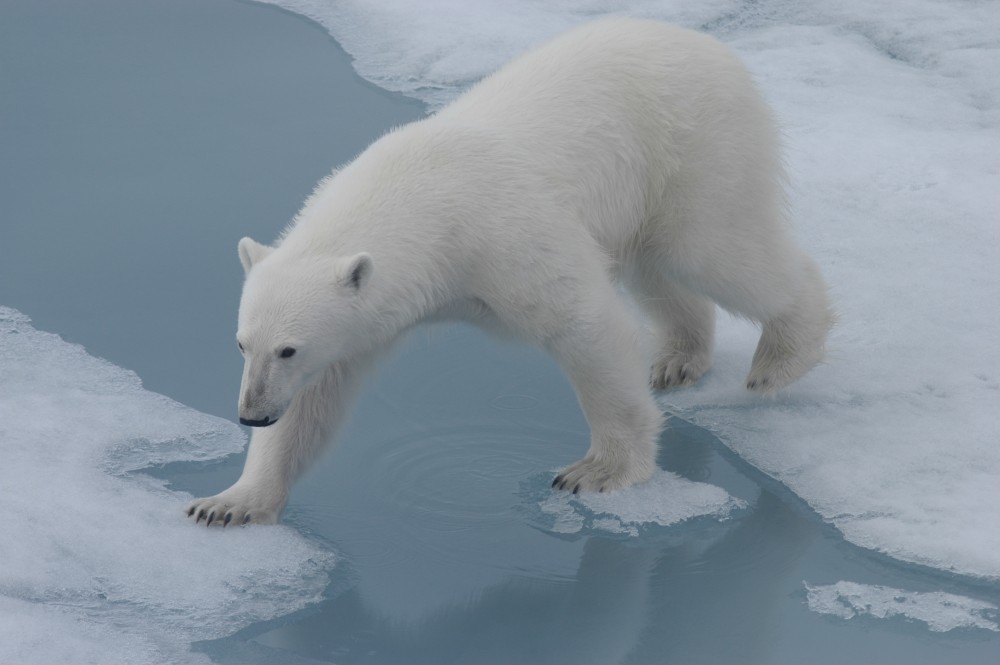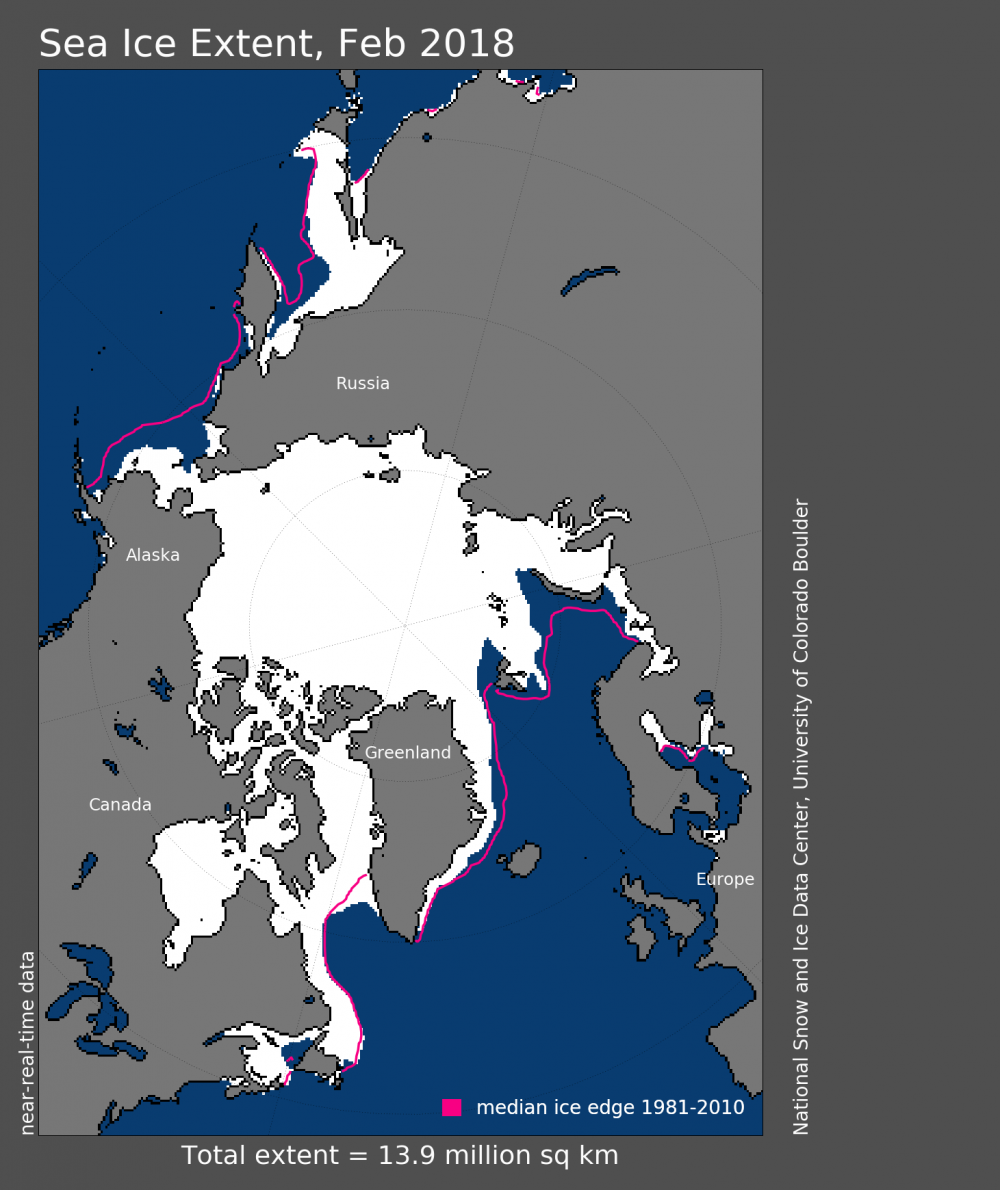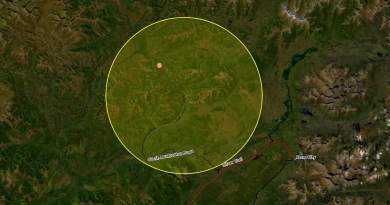February Arctic sea ice at a record low in 2018

A wedge of open water formed north of Svalbard and well into the Arctic Ocean in late February, satellite images show.
Never before in records of satellite monitoring has the February sea ice extent been lower in the Arctic, the latest data from National Snow & Ice Data Center shows.
You can now sail open waters far north of Svalbard and even north of Novaya Zemlya. Practically all of the eastern Barents Sea is without ice. On the Pacific side of the Arctic, open water was expanding rapidly in the Bering Sea in the second half of February.
Spring has likely never been earlier in the high Arctic than now.

The sea ice map is based on satellite observations and shows Arctic sea ice extent for February 2018 averaged 13.95 million square kilometers. This is the lowest monthly average recorded for February, 1.35 million square kilometers below the 1981 to 2010 average and 160,000 square kilometers below the previous record low monthly average in 2017.
Cold Europe, hot Arctic
If you are in Europe, you might think this winter is much colder than in “man’s memory” with frost and snow in Paris and Rome. In the high Arctic, weather patterns are opposite with temperatures measured around freezing point last week. That is 30 to 40 degrees Celsius warmer than average for late February.
Weather systems across Scandinavia have pushed warm, moisture-laden Atlantic air northbound and the cold Arctic air south to freezing Europeans. The same has been seen over North America.
At Svalbard, the Norwegian archipelago with the world’s northernmost settlements, average temperature for February was -5,4°C which is 10,8°C warmer than average for the month, data from the Norwegian Meteorological Institute shows. Last Monday was warmest with plus 4,7°C.
This is the third winter in a row in which extreme heat waves have been recorded over the Arctic Ocean.
Large-scale Arctic study
Polar scientists in Norway are now launching a large research project, named Nansen Legacy aimed at studying the rapid changes to the marine environment in the northern Barents Sea.

Some 140 researchers are involved with a budget of 740 million kroner (€75 million). The Norwegian research community will over the next years create a knowledge basis for how to mange the dramatic changing environment. Much of the research is based at the FRAM centre in Tromsø, northern Norway.
Related stories from around the North:
Canada: Loaded with more mercury than previously thought, permafrost thaw could be a ticking time bomb, Radio Canada International
Finland: Dozens of dead moose discovered in Arctic Finland, Yle News
Greenland: Greenland earthquake and tsunami – hazards of melting ice?, blog by Irene Quaile, Deutsche Welle
Norway: Warmer Barents Sea hits kittiwake birds reproduction capacity, The Independent Barents Observer
Russia: More than 200 polar bears assembled on beach in Arctic Russia, The Independent Barents Observer
Sweden: Swedish mining company in court over toxic waste exported to Chile in the 1980s, Radio Sweden
United States: Arctic: Record ice-loss, highest melt rate in 1,500 years, Radio Canada International



